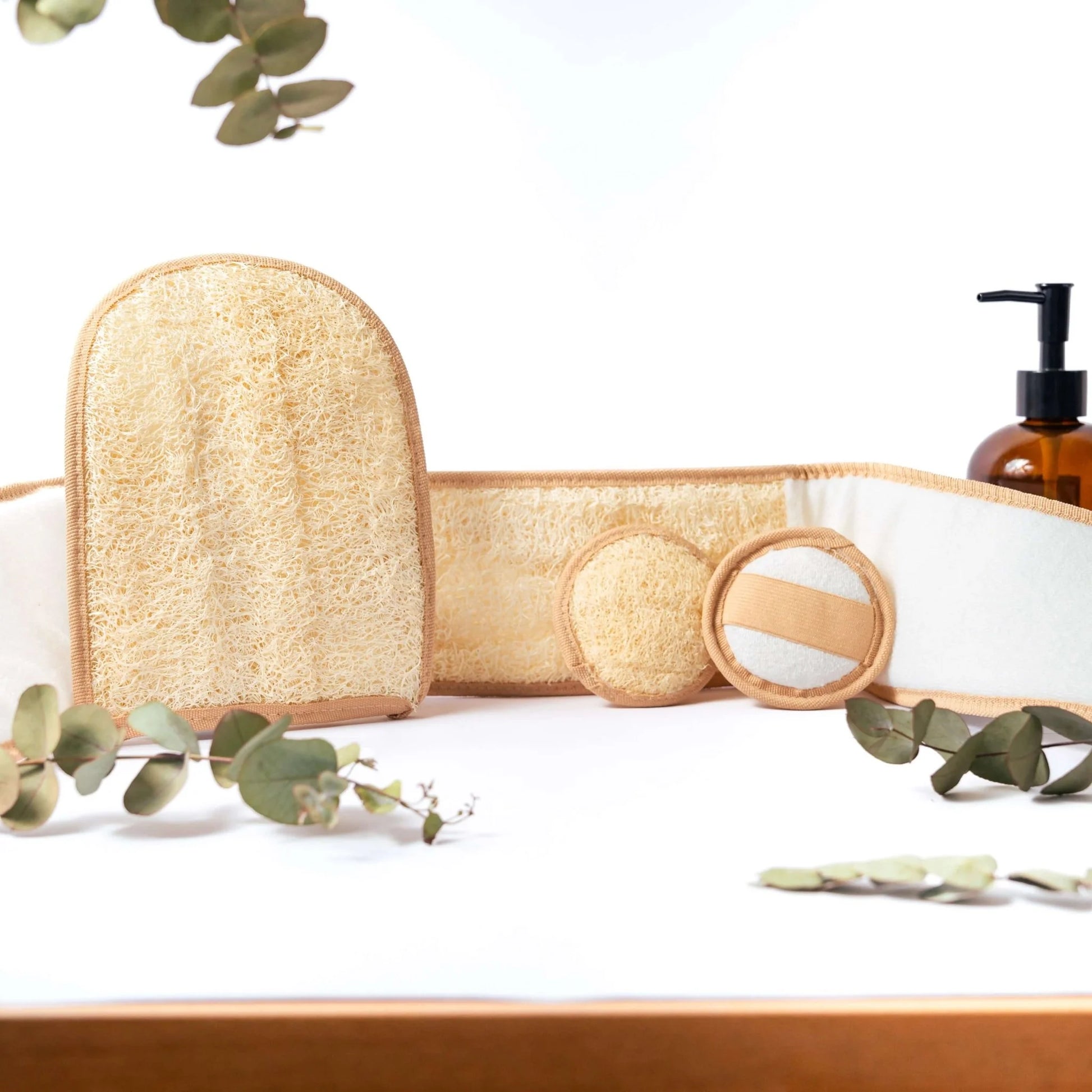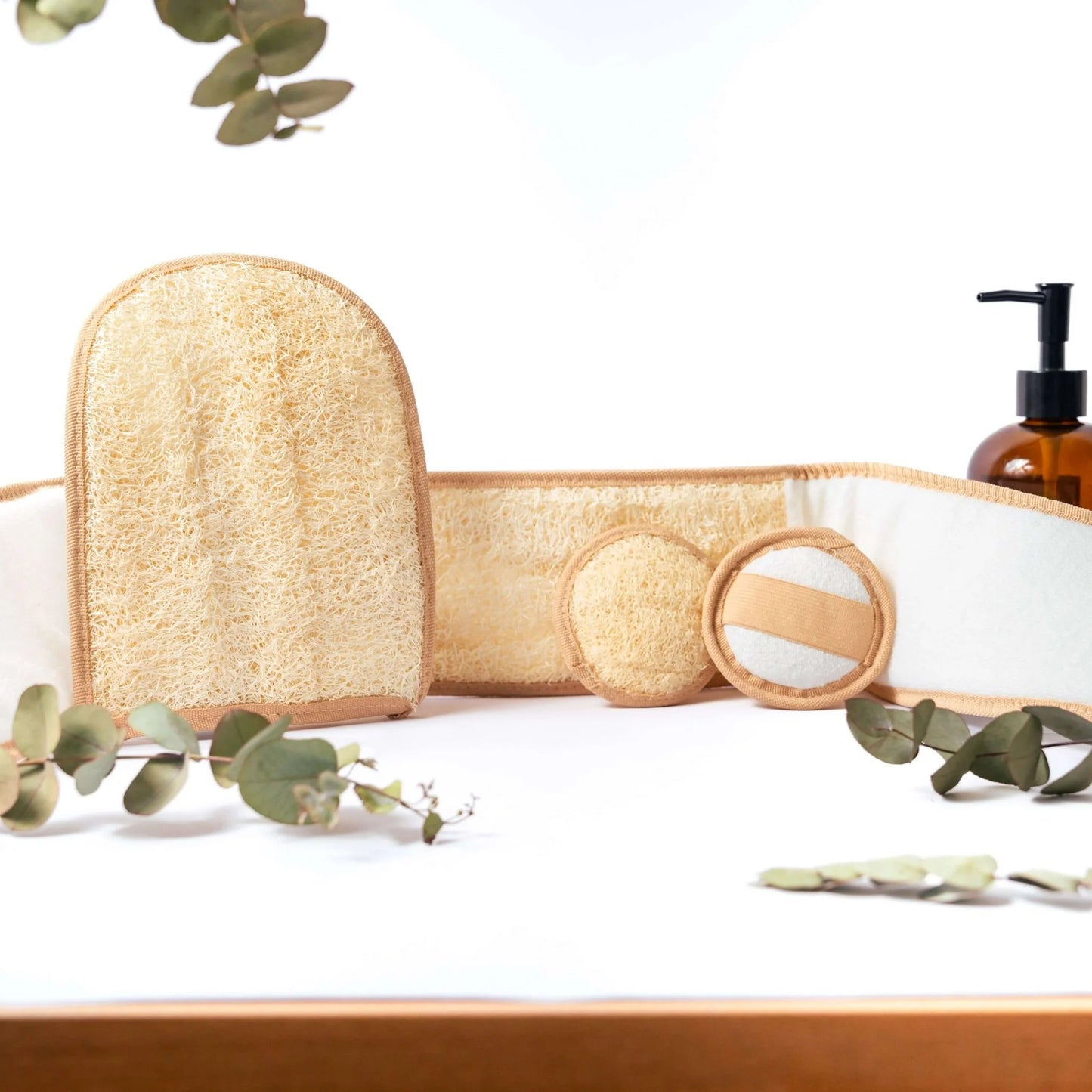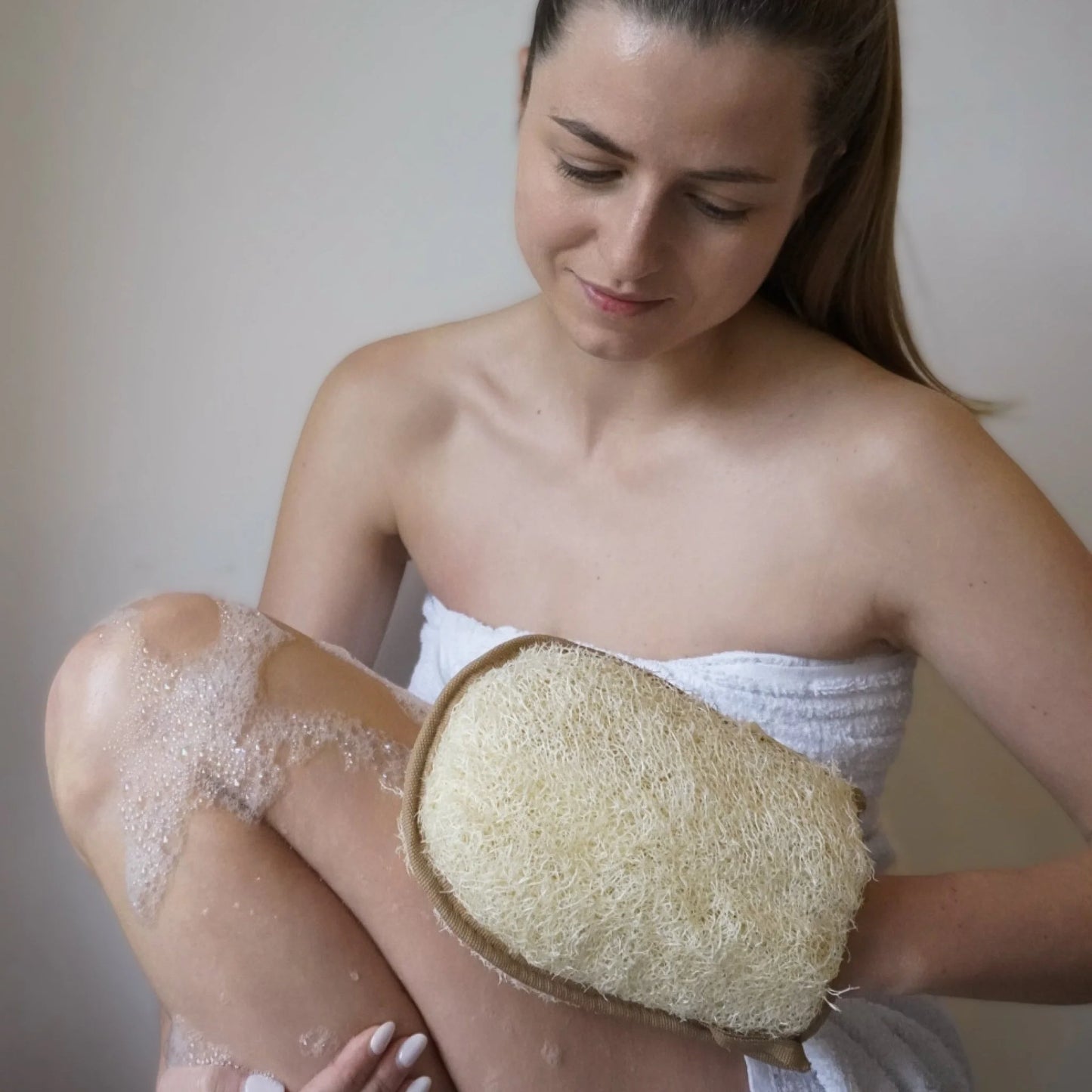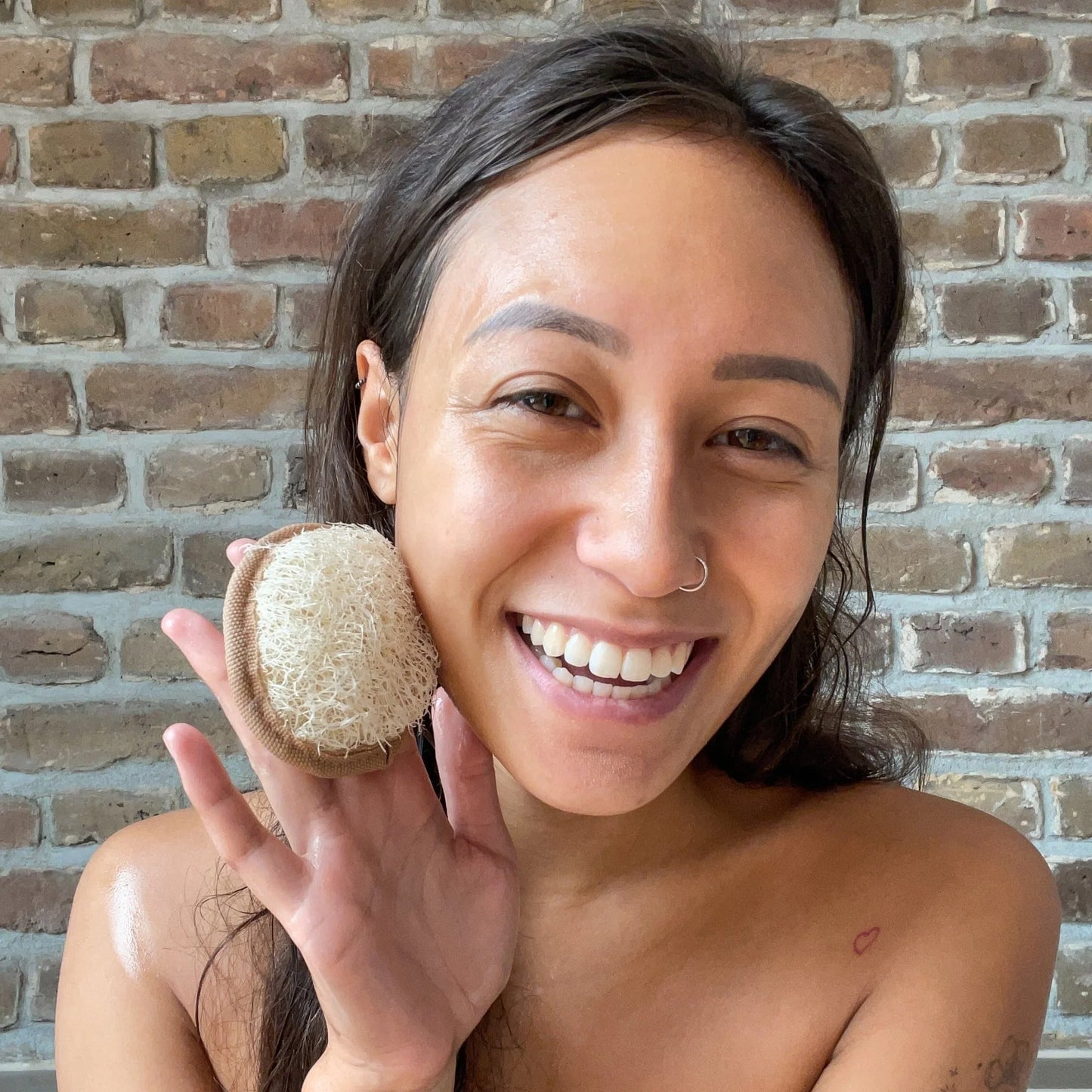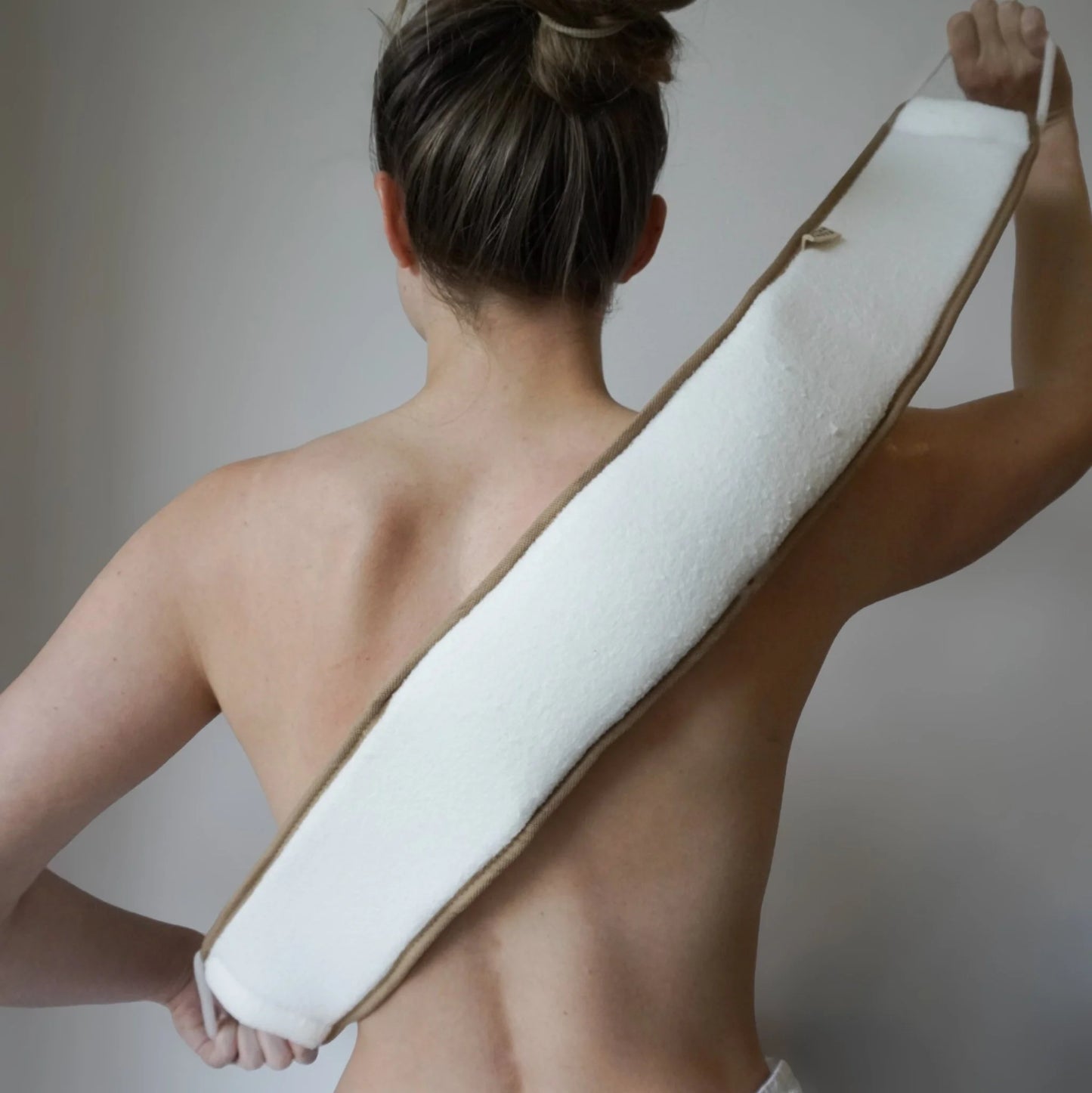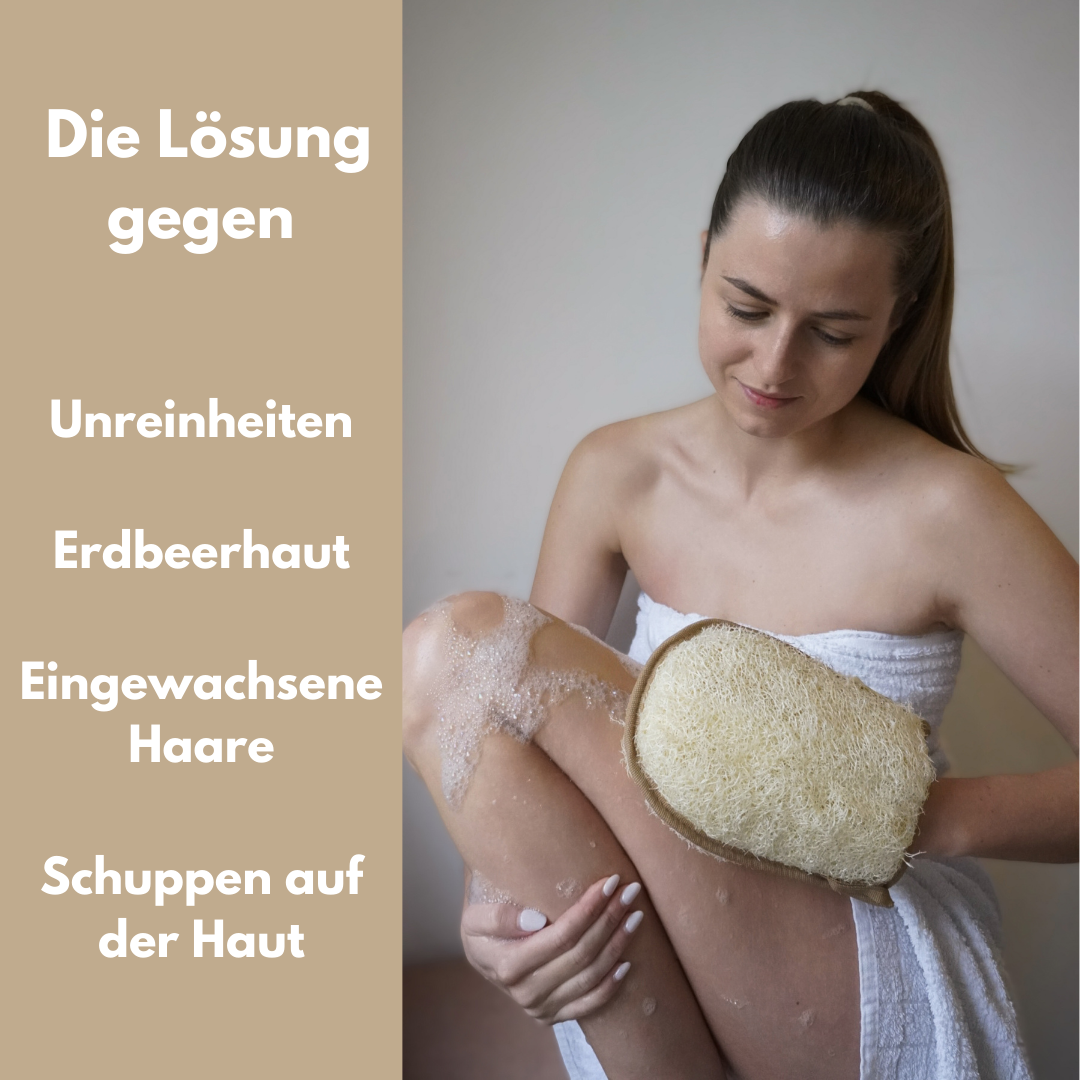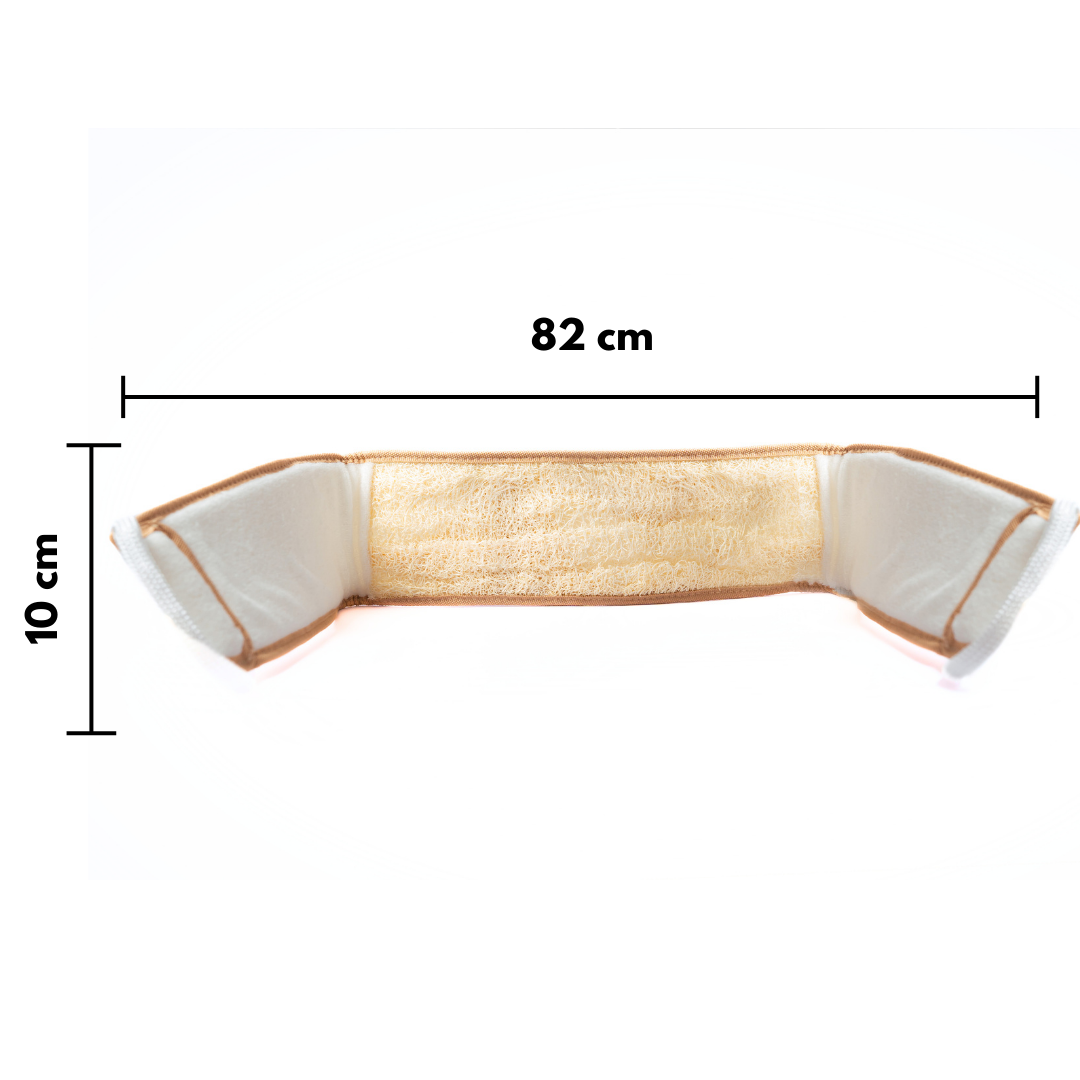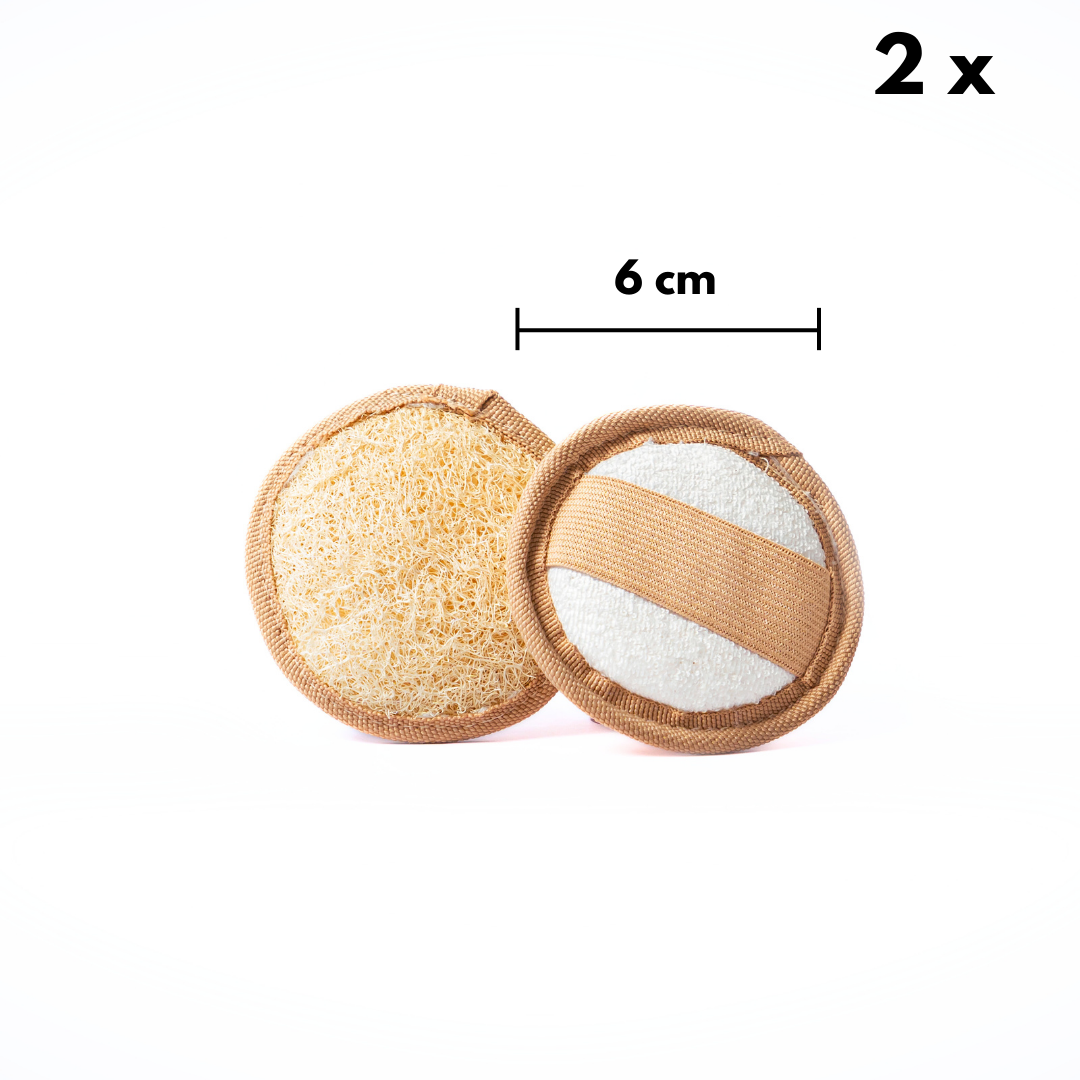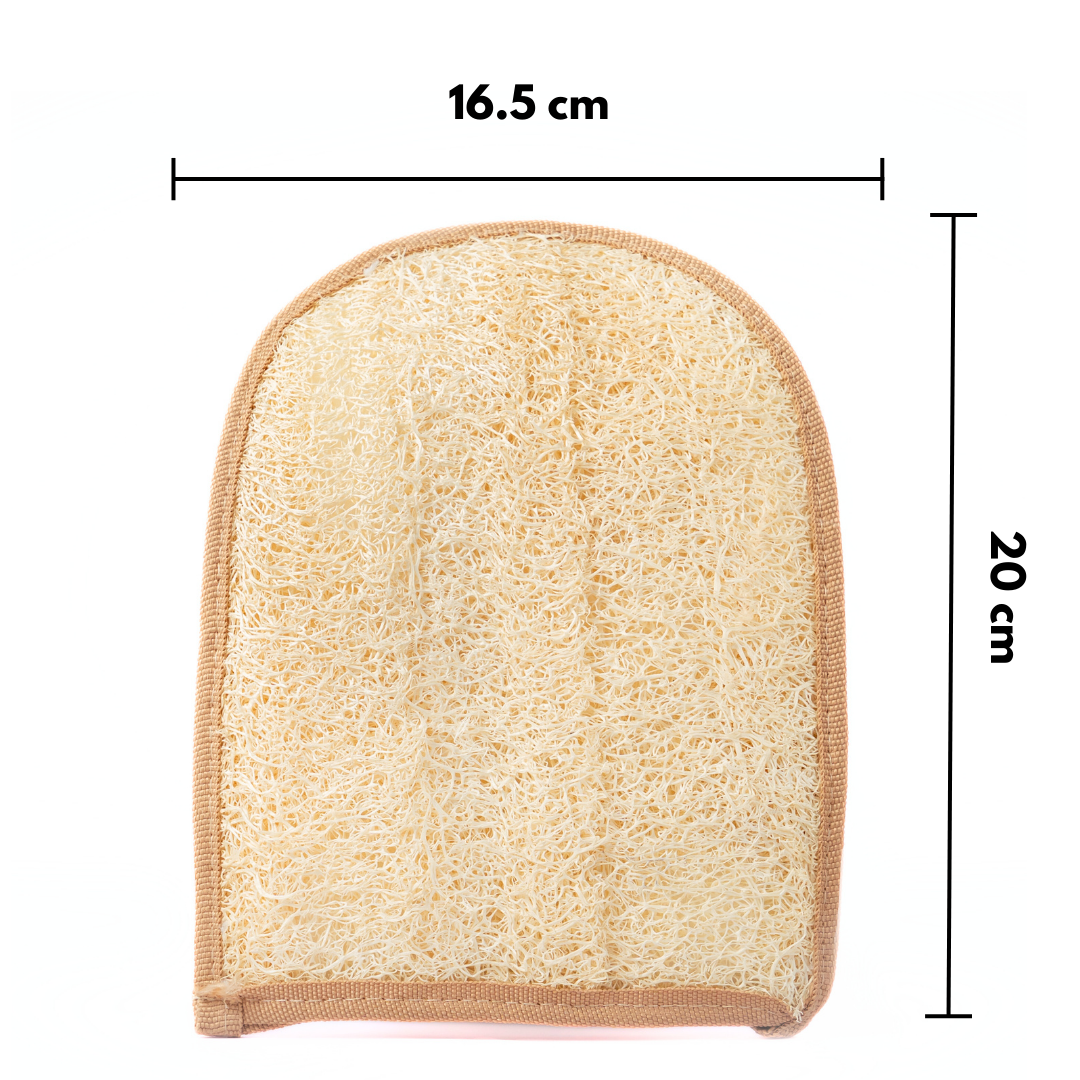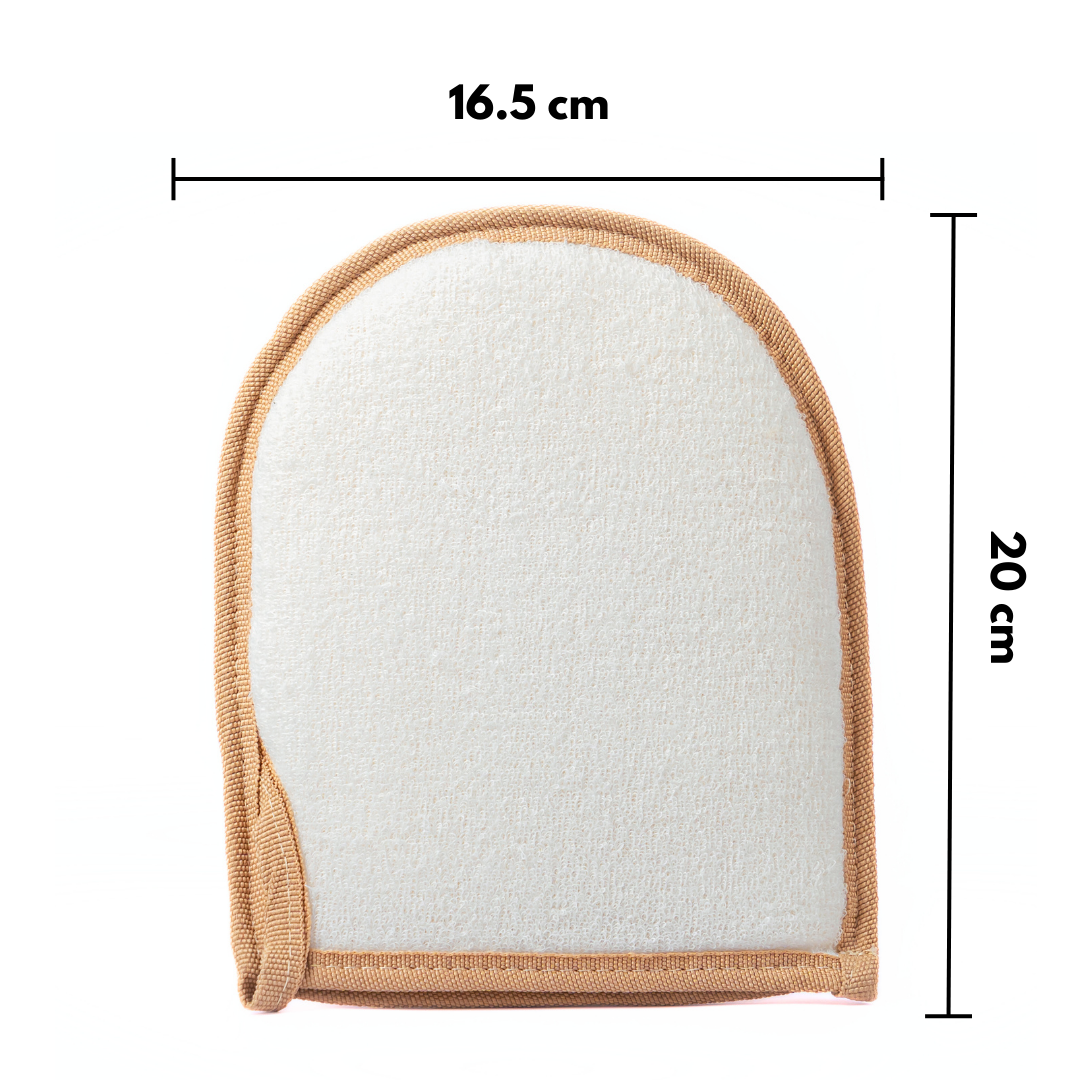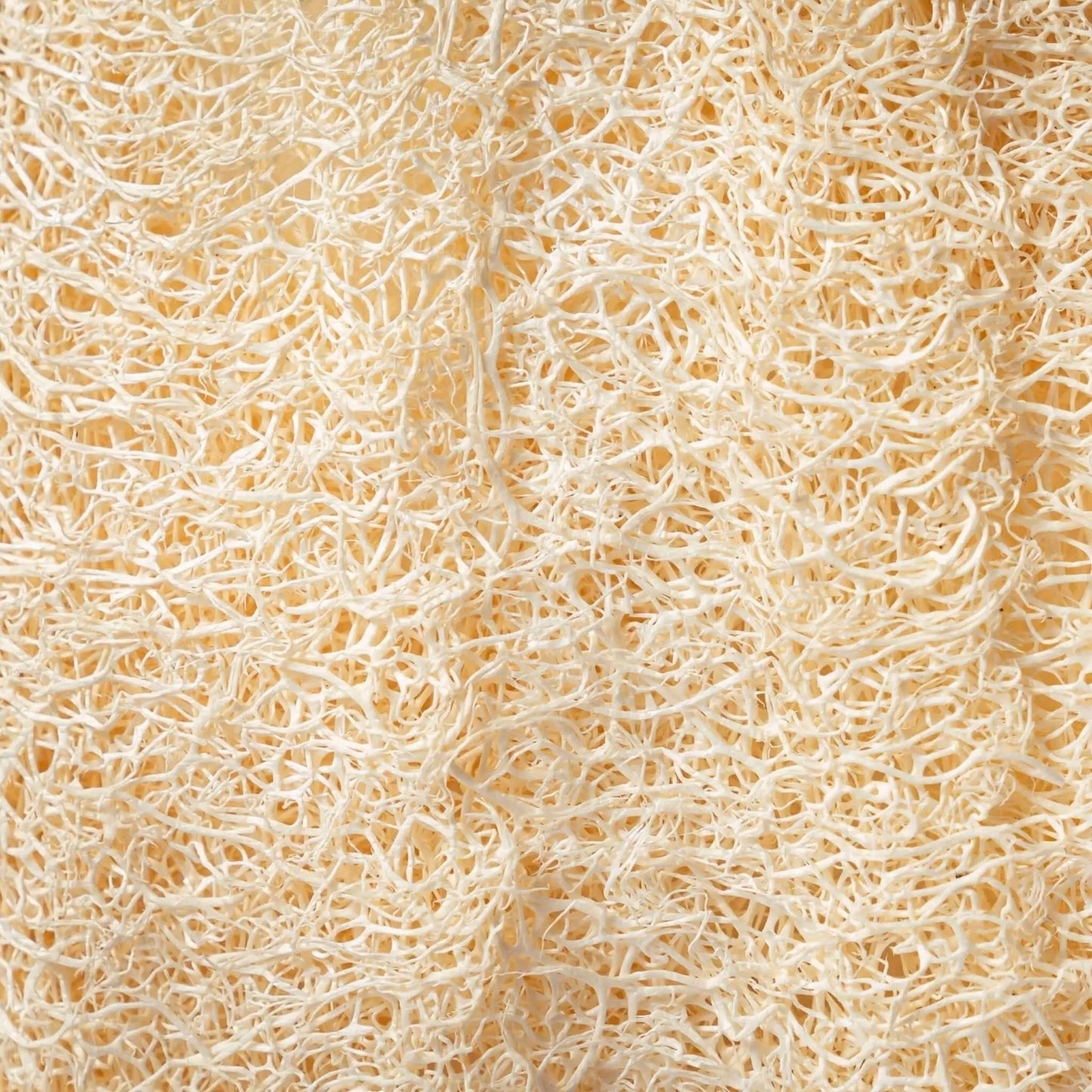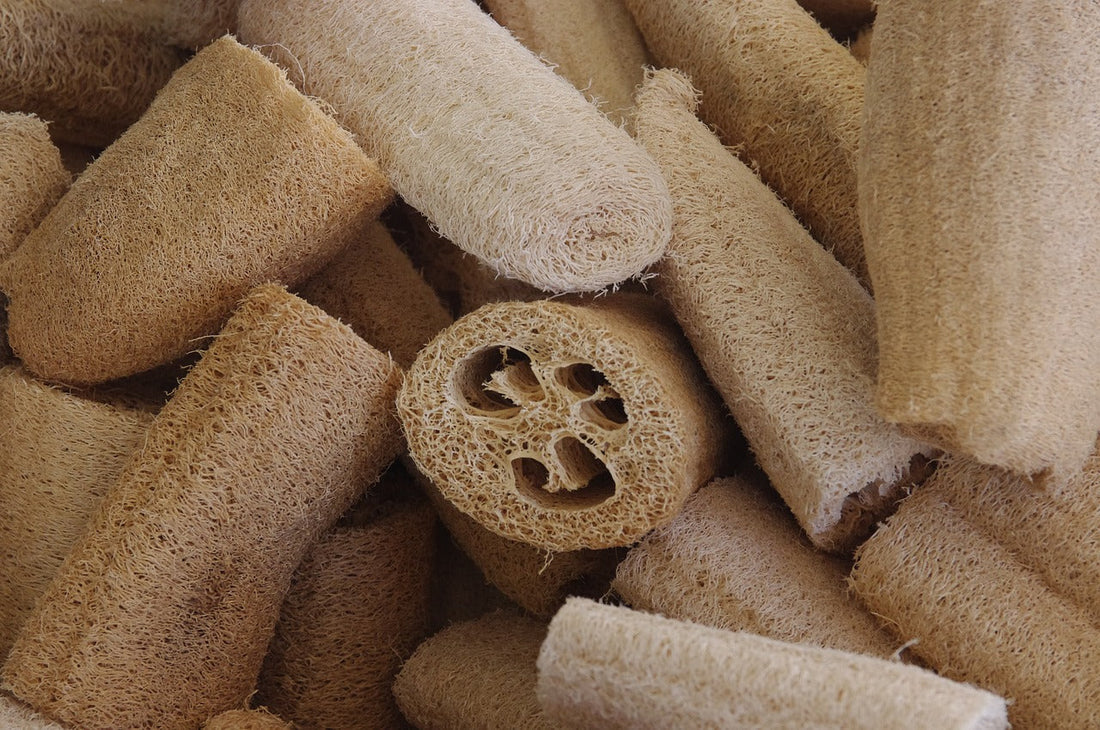
Plastic Loofah vs. Natural Loofah: Which Sponge Is Better for Your Skin and the Environment?
Share
Choosing the right sponge for your skincare routine can make a big difference—for both your skin and the environment. Many people are familiar with the classic "plastic loofah" often sold in drugstores. But how does it compare to natural loofah sponges? Here, we’ll explore the key differences, pros, and cons of each option and show why a natural loofah can be the better choice for sustainable care.
1. What Is a Plastic Loofah?
A plastic loofah, often referred to as a "synthetic loofah," is made from materials like polyethylene or other plastics. These sponges are popular because they are inexpensive and durable. Their rough and firm structure makes them ideal for deep exfoliation.
Disadvantages of Plastic Loofahs:
- Microplastic Release: Each use sheds tiny plastic particles that rinse into the sewage system and eventually end up in the oceans.
- Non-Biodegradable: Plastic loofahs take hundreds of years to decompose, contributing to environmental pollution.
- Harsh on Skin: Plastic loofahs are often too abrasive for sensitive skin, causing irritation or redness.
2. What Is a Natural Loofah Sponge?
Natural loofah sponges come from the loofah plant, a tropical climbing plant in the gourd family. The fruit of the plant is dried and processed to extract the loofah fibers, which are then used as a natural sponge. Natural loofahs are known for their soft yet exfoliating texture, gently cleansing and polishing the skin.
Advantages of Natural Loofah Sponges:
- Biodegradable: Natural loofahs decompose naturally, making them perfect for eco-conscious consumers.
- Gentle on Skin: Unlike plastic loofahs, natural loofahs are mild yet effective, making them ideal for daily skincare.
- Versatile: Natural loofahs can be used not only for body care but also as an eco-friendly household cleaning alternative.
3. Comparison of Cost and Durability
Plastic loofahs are usually cheaper and can last for several months. Natural loofahs are slightly more expensive but can last longer with proper care. To maximize their lifespan, natural loofahs should be dried thoroughly after use to prevent mold and cleaned regularly by soaking in hot water.
4. Sustainability in Your Skincare Routine
Switching to natural products like a natural loofah is an easy way to reduce plastic in your bathroom and help protect the environment. Natural loofahs are a small yet impactful choice for a more sustainable world. By using biodegradable products, you reduce waste and help minimize ocean pollution.
5. Why Natural Loofahs Are the Better Choice
If you’re looking for a sustainable alternative, the natural loofah sponge is the ideal option. It offers effective, skin-friendly cleansing while being an environmentally responsible choice. Choosing natural materials promotes healthier skin and makes a small but valuable contribution to environmental conservation.
Summary:
Natural loofah sponges are the more sustainable and skin-friendly option for your daily care routine. Unlike plastic loofahs, they provide gentle cleansing and are biodegradable. If you’re searching for a plastic-free, eco-conscious alternative, the natural loofah sponge is the perfect choice.
About LoofahCrafts
LoofahCrafts offers natural loofah products that perfectly suit a sustainable lifestyle. From bath sponges to exfoliating pads and household sponges, all products are made from high-quality loofah fibers. If you’re looking to buy premium loofahs that are gentle on your skin and good for the environment, LoofahCrafts is the right place for you!

